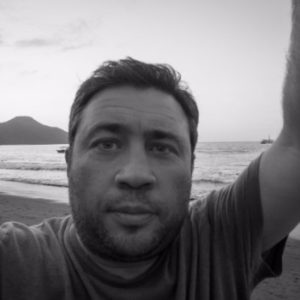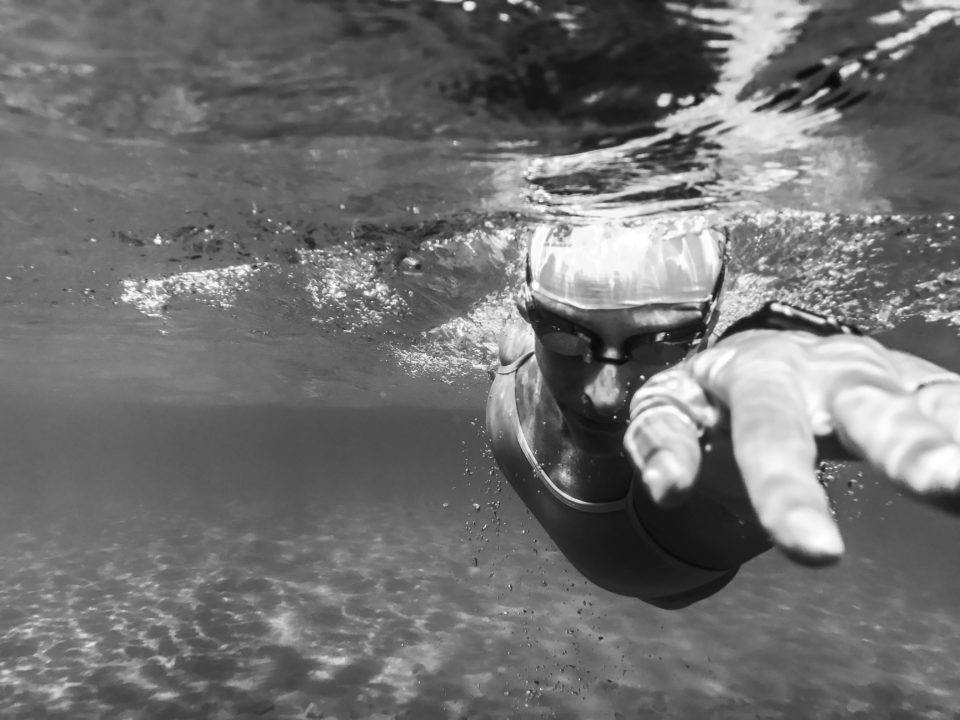Courtesy: Stas Holodnak
The scenery on the Coney Island Beach in July was nothing short of idyllic. Children played in the waves under watch of the lifeguards who whistled occasionally when someone played roughly. Farther away a few people were swimming between the jetties. Still farther, akin to migratory birds who fly higher and longer distances, the group of swimmers were pushing along the Coney Island shoreline. Some of them were towing the red dry, floating bags that stored their clothing and other belongings. These bags double as flotation devices and are visible from afar. The formidable swimmers were training for the triathlon. They like Coney Island because of it’s quiet waters which are not common in nearby Rockaways and the Jersey shore – places with beautiful shorelines, but plenty of waves and rip currents.
The water was clean, refreshing and made me feel especially appreciative because it was the first time in many months I was swimming in it. For the last year I tried to wait out the pandemic in the mountainous region of Eastern Pennsylvania called Poconos. The Poconos has many dozens of lakes, most of them small and man-made. One such lake was next to the place where I was staying and I was swimming, kayaking and sailing on it as much as I could. Lake water is not ocean water. You sometimes touch the grassy floor with your feet when you swim and depending on rain the night before you can come out of water like an indigenous lake creature with your skin tattooed with tiny dots of dirt that soon dry up and fall off. Lake water contains none of that magic energy boost that sea water gives you.
The lake where I was had a swimming area that was marked by floating lines. Two tall wooden lifeguard chairs were emptied of their occupants because of the Covid restrictions. The lifeguards save lives especially in lakes, ponds and swimming pools where people’s sense of their vulnerability is less erect. But by confining all swimmers to tiny places, they inhibit swimming. The swimming area at my lake is the size of Starbucks while the lake is the size of at least five city blocks. The person who decided on its size was hardly a swimming enthusiast.
“Swim at your own risk” the lifeguards proclaimed every evening before leaving and I gladly obliged. So when the community didn’t not retain the lifeguards for the Covid baked summer, I didn’t miss them. I swam around the long and narrow island that sits in the center of the lake. People on paddle boards, kayaks and fishing boats would give me surprised looks while small birds, ducks and turtles minded their own business.
On the 4th of July the lake’s beach was filled with people. It was hot and the swimming area was tightly packed. The lifeguards were absent but no one ventured outside the lines that marked the swimming area. Instead, people preferred to congregate within the area where there was as much space as in a filled to capacity airplane. It didn’t surprise me. As kids Americans learn to swim in swimming pools. The water in the pool is clear to the bottom and one can swim only a preset distance one way. My friend, for example, learned to swim in the pool. He was on his school’s swimming team. He got a nice, clean stroke but he will never venture beyond the nearest buoy. I grew up near the Ros River in Ukraine. When I was learning to swim, my goal was to get to the other side of the river, not to learn the right technique. I still remember the joy I felt when my feet touched the ground of the ‘Riverbeyond’ – the name by which my townsfolk referred to the river’s other side.
Maybe the confines of the swimming pool are partially the reason but many Americans think of swimming only in terms of a safety skill and a healthy workout exercise. Swimming is more than that. It grants freedom from gravity and freedom to move through matter other than hard land. Yet, no matter how good swimming makes us feel, water is not our natural habitat. A swimmer must estimate the swimming distance in such a way that at any point the body has enough energy left to return back to shore. If we want to swim, we should follow the example of those who train for a triathlon – swim far but carry a floating rescue bag. Swim in quieter waters and swim with friends.
Also Read:
About Stas Holodnak
The very first time Stas saw the sea was as a little boy. He saw it from a bus window at the end of a bumpy twelve hour ride. The Black Sea appeared to him as blue as the sky itself only much crisper and within reach. Today Stas lives in Brooklyn mere steps from the water. If he is not swimming or sailing – he is writing about it.
